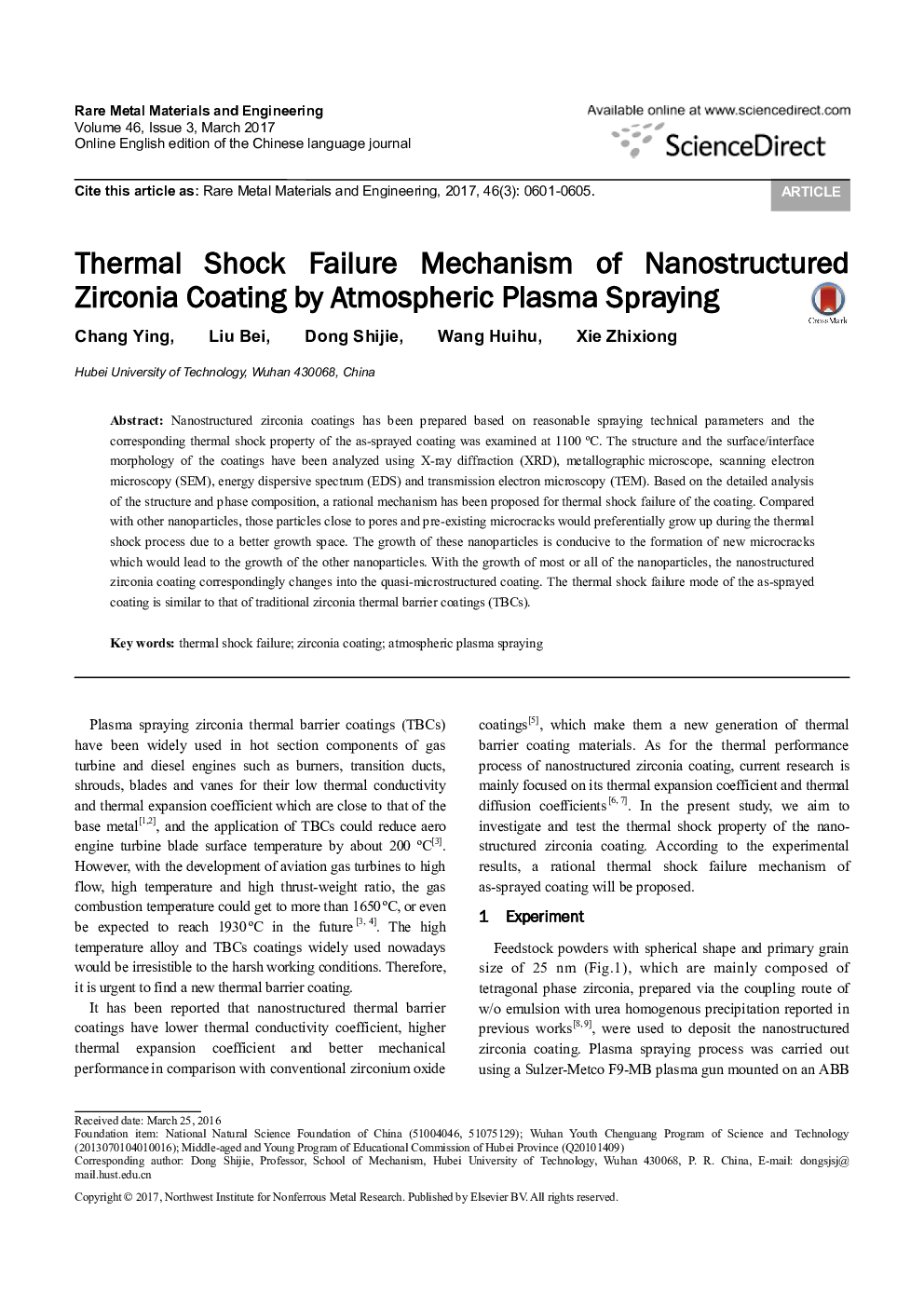| Article ID | Journal | Published Year | Pages | File Type |
|---|---|---|---|---|
| 7210444 | Rare Metal Materials and Engineering | 2017 | 5 Pages |
Abstract
Nanostructured zirconia coatings has been prepared based on reasonable spraying technical parameters and the corresponding thermal shock property of the as-sprayed coating was examined at 1100 °C. The structure and the surface/interface morphology of the coatings have been analyzed using X-ray diffraction (XRD), metallographic microscope, scanning electron microscopy (SEM), energy dispersive spectrum (EDS) and transmission electron microscopy (TEM). Based on the detailed analysis of the structure and phase composition, a rational mechanism has been proposed for thermal shock failure of the coating. Compared with other nanoparticles, those particles close to pores and pre-existing microcracks would preferentially grow up during the thermal shock process due to a better growth space. The growth of these nanoparticles is conducive to the formation of new microcracks which would lead to the growth of the other nanoparticles. With the growth of most or all of the nanoparticles, the nanostructured zirconia coating correspondingly changes into the quasi-microstructured coating. The thermal shock failure mode of the as-sprayed coating is similar to that of traditional zirconia thermal barrier coatings (TBCs).
Related Topics
Physical Sciences and Engineering
Engineering
Mechanics of Materials
Authors
Chang Ying, Liu Bei, Dong Shijie, Wang Huihu, Xie Zhixiong,
